The month of December 2020 was quite calm for me, I was finally able to dive back into reading, I had discovered some time ago that we had in our possession the manuscript of the trial of Joan of Arc, this piqued my curiosity and prompted me to write this article.
First of all, it is important to know that Joan of Arc’s trial and her execution took place in 1431. The trial was transcribed in Latin by one of the witnesses, Thomas de Courcelles. Half a century later, Louis XII asked for the manuscript to be translated into French.
The translation of the manuscript in French was reworked and updated several times, the version that I read is by Robert Brasillach, published in 1932. This version remains the most pleasant to read as it was written beautifully and focuses on the answers Joan of Arc gives to her judges during her trial.
Brasillach’s book is divided into 3 parts – the public trial, the secret trial (the interrogations in Joan’s cell) and the judgment. The questions asked by the judges followed a chronological timeline and perfectly laid out the course of Joan’s life. So the book is almost an autobiography of Joan of Arc.
In addition to the trial of Joan of Arc by Robert Brasillach, I also read “Joan of Arc: the reconquest of France” by Regine Pernoud who specializes in the history of Joan of Arc. This book is a good complementary read since it focuses more on how France reconquered its territories from 1431 to 1453 following the events triggered by the adventure and the death of Joan.
In this article, I will include my favourite 5 elements of her story.
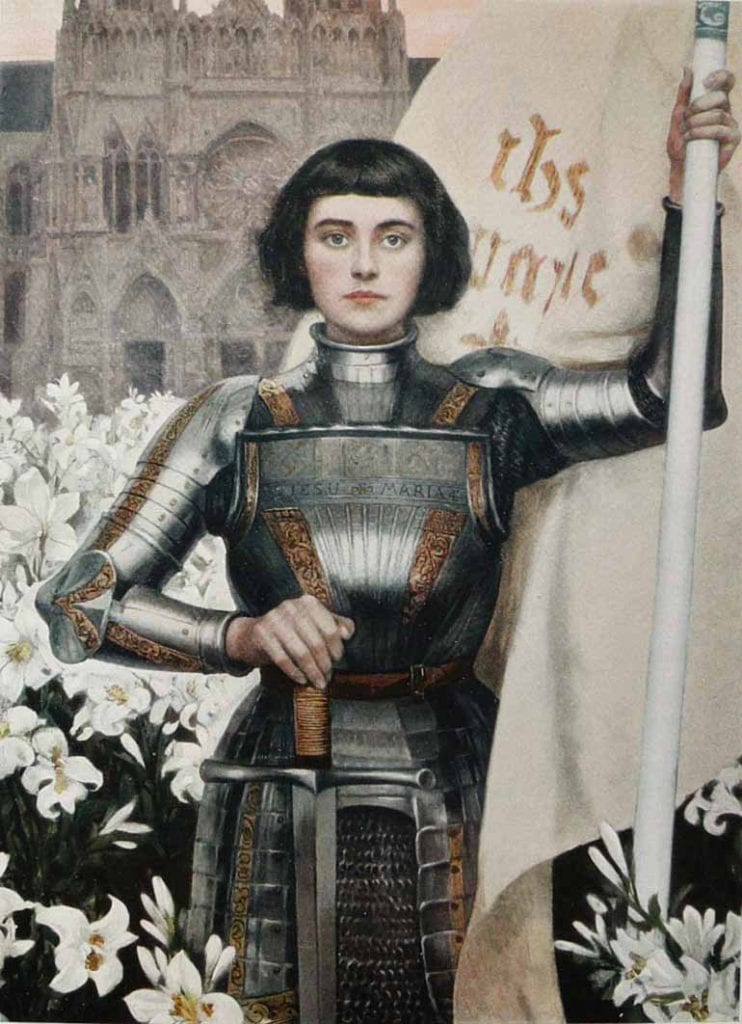
Introduction
Before starting we need to put ourselves in context.
In 1392, King Charles VI of France suffered from dementia which ended up driving him mad. His inability to govern triggered 2 catastrophic events for France.
First, Faced with the king’s inability to govern, his uncle Philippe Duke of Burgundy and his brother Louis the first of Orléans (the prime pick to succeed King Charles VI) fought for the crown of France. The son of Philippe Duke of Burgundy ordered the assassination of Louis of Orléans to prevent him from becoming king, this event triggered the civil war between Burgundians and Armagnacs (the rest of France) in 1407. As a result, France didn’t have an official king.
Second, England saw these events as an opportunity and took advantage of the king’s madness and the civil war to attack France. It was at this time that the Battle of Agincourt took place in 1415 (the famous battle was fictionalized by Shakespeare in “Henry V” and caricatured by Netflix’s “The King”).
Following the French defeat, the English were able to seize the North West of France while the Burgundians seized the North East.
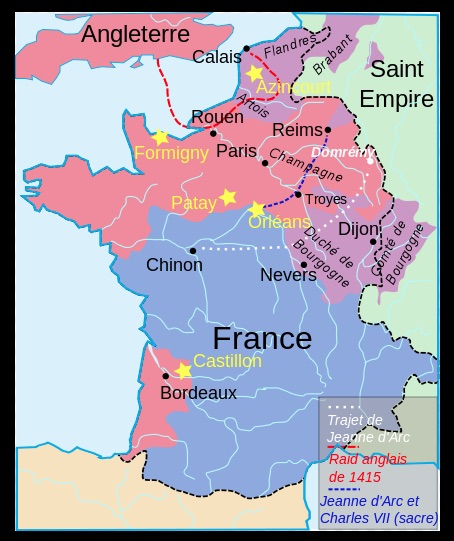
Joan of Arc was born in this context, in 1412 in a town under Burgundian occupation called Domrémy. At that time, no one would have imagined that a 19-year-old peasant girl would give back a rightful king to France, end the civil war and expel the English invaders from the country. Here is the incredible story of how she saved France.
1. Joan of Arc Meets Saint Michael
In the film “Joan of Arc” by Luc Besson, Joan was guided in her quest by visions. In the film, her “visions” were represented by a man who resembles Jesus Christ. I think this choice was made because Jesus Christ is easily identifiable by viewers, however, this was purely a creative choice of the director.
In truth, Joan of Arc wasn’t guided by Jesus Christ, but by the archangel Saint Michael. In the spring of 1425, she was only 13 years old in a forest near Domrémy, when Saint Michael, dressed in his armour, appeared in front of her. He entrusted her with the immense responsibility to lead the “Dauphin” (son of the king), Charles VII, to Reims for his coronation to the throne. To do so, he trained Joan of Arc in the art of war and gave her a detailed plan of how to proceed.
2. Saint Catherine and Saint Marguerite
Saint Michael introduced Joan of Arc to Saint Catherine and Saint Marguerite. These two Saints advised Joan throughout her quest. Saint Catherine of Alexandria and Saint Margaret of Antioch have a lot of things in common with Joan of Arc. They both died as young martyrs while protecting their faith. The two Saints became an important emotional support for Joan during her journey.
This is their background story:
Catherine of Alexandria, born in 290, received a visit from the Virgin Mary and her son Jesus Christ, this event converted her to Christianity. In 313, the Eastern Emperor Maximin, pushed by non-believing philosophers, ordered the Christians of the empire to be burnt alive. In response, Catherine presented herself in front of the Emperor. She rebuked him for the cruelty of his paganism.
Maximin, seduced by her beauty, organized a debate opposing Catherine to the fifty best philosophers of the Empire. Catherine succeeded to win the debate and convert the philosophers to Christianity. Maximin, scared that she will convert the entire kingdom to Christianity, orders her execution. She was executed at the age of 18 as a martyr and years later she was sanctified.
Marguerite of Antioch, born in 289, was a young Christian living in Rome. The Roman governor, Oblybrius, fell in love with her beauty. He asked Marguerite to marry him on the condition that she renounce Christianity. Marguerite refused to abandon her religion which was what led her to be cruelly tortured
After many punishments from which Marguerite always emerged victoriously. People from Rome started spreading the rumour that the Christian faith is stronger than any physical punishment. The governor, frightened by the power of her faith, executed her for fear that her belief in Christianity will spread true to the kingdom. She died as a martyr in 304 at the age of 15.
During Joan of Arc’s trial, she claimed that these two Saints speak with her every day. They guided her and bought her courage through her campaign. These Saints reminded Joan every day, that no matter how hard and painful the road is, her mission is more important than her life on earth. Saint Catherine, Saint Margeurite, and Saint Joan of Arc shared a common bond; they were all young resistance fighters, martyrs and then saints.
3. Charles VII
In 1429, following the order of Saint Michael, Joan set out to meet Robert de Braudicourt in Vaucouleurs (a town close to Domremy). The lord of Baudicourt was the only one able to guide her to the Dauphin. Joan met Braudicourt and convinced him of her mission, Braudicourt gave her a horse and escorts which took her to Chinon to meet the Dauphin. It was at this time, Saint Michael ordered Joan to dress like the other men in proper battle attire so she would be more comfortable during battle.
Once arrived in Chinon, Joan was taken to see the Dauphin. The Dauphin, wary of a trap, dressed as a servant and hid from her. To trick Joan, a fake king was presented in front of her. Guided by her voices, Joan walked away from the fake king in direction of the Dauphin and recognizes him in the crowd.
After she miraculously identified the Dauphin, he agreed to speak with her in private. During their discussion, she had shown him a “sign” that convinced him that Joan was indeed sent by the almighty to save France. During Joan of Arc’s trial, she claims that the “sign” was an angel who entered through the window of the castle to convince the king of her legitimacy.
Joan explained to the Dauphin that it was her mission to bring him to Reims for his consecration as the King of France. For her to successfully get to Reims, she needed to pass through Orléans, which was under siege by the British. Her mission consisted to free Orléans from its siege and then bring the Dauphin to Reims. In order so, the Dauphin gave her an army and trusted her with the commands of the operation.
Joan was 18 when she arrived in front of Orléans with 500 soldiers.
“In the name of God, withdraw or I will make you leave” she screamed to the English before entering into the siege and regained the city.
Once Orléans was liberated, Joan continued her mission and led the Dauphin to Reims. He will be crowned Charles VII, the only king of France. Now that France has a king, the reconquest of their territory could finally begin.
4. Military Conquests
Joan’s first military victory was the liberation of Orléans. At that time, France was divided in two by the river of Loire. At the north of the Loire were the British-occupied territories, at the south, the French territories.
Orléans was a big port city, the conquest of it was an important victory for France who had now won control over the Loire river maritime transport.
The victory of Orléans, in addition to being an important geostrategic victory, brought back moral forces necessary for the French to push back the English invaders. The rumour ran very quickly that Joan and the new king of France Charles VII will reconquer the lost territories. Following the reconquest of Orléans, a military campaign was launched throughout the Loire. During this campaign, the French took over several territories from the English (Jargeau, Meung-Sur-Loire, Beaugency).
But the most important was yet to start.
Many people know of the Battle of Agincourt (key battle of the Hundred Years’ War adapted in the Netflix movie “The King” where the English, in fewer numbers win the battle over the French and occupied the north of France), but few people know of the Battle of Patay which is considered the French revenge of Agincourt.
On June 18th, 1429, a French scout patrolling with 180 French knights saw an army of 5000 English soldiers in a distance near Patay. Instead of turning back, the 180 French knights decided to ambush the 5000 English soldiers. The English army was immediately put out of action resulting the death of 2500 English soldiers and 3 French knights.
France had just defeated the main English army. English military forces in France never recovered from it. The rest of the military operations of the Hundred Years’ War were essentially reduced to a long series of sieges by which the French won back one stronghold at a time.
In 1429 following Patay’s victory, Joan tried to retake Paris which was still under British occupation. But during battle, Joan got injured in the leg by an arrow. The attack failed and the French were forced to retreat. Paris will wait to become French again 5 years after Joan’s death in 1436.
In 1431 Joan tries to retake Compiègne from the Burgundians, but she failed and got captured. During her imprisonment, she tried to escape by jumping from her cell window and seriously injuring her leg. The Burgundians sold her to the English on the 21 of Nov 1430, for 10 000 Tours Pounds, they took her to Rouen where their headquarters were located.
5. Joan of Arc’s Trial, Death and the Reconquest of France
After Joan was captured by the Burgundians, she was sold to the English and transported to the castle of Rouen (a city located in the northwest of France).
She was imprisoned and tried by 120 judges (twenty-two canons, sixty doctors, ten Norman abbots, ten delegates from the University of Paris). Some of these judges refused to participate in Joan of Arc’s trial for fear that she was truly sent by God but British officers forced those judges to participate in the trial.
Joan had a few different charges against her. The court accused her of wearing men’s clothes, leaving her parents without consent and lying about her voices. But above all, they accused her of following God’s judgment instead of the church’s. During Joan of Arc’s trial, the judges tried to make her abandon God’s jurisdiction to instead follow the earthly ecclesiastical authority. This was because the church didn’t believe in the voices Joan was hearing, they thought she was crazy or sent by demons and they wanted her to admit it.
Through questioning, the entire trial tried to prove if Joan was truly sent by God or not. Joan’s defence consisted of proving that all her actions were guided by God’s will. She revealed her story and explained how the voices guided her during the mission.
Although very young (19 years old) and not knowing how to read or write, she replied to her judges in a very rebellious and talented way.
Throughout Joan of Arc’s trial, she responded with intelligence and charisma and convinced some of the judges of her holy mission. Joan of Arc’s trial lasted 3 months, she refused the accusations of the judges and at times, without the need to justify herself. She specifies that her orders came directly from God and because of that, she doesn’t need to justify her action to earthly beings.
The judges tried to pressure her into delivering some information that her voices didn’t allow her to speak about. Things like premonitions, battle techniques or what is going to happen next. She always drew a line to the judges between what she is allowed to say and what she is not. Joan made it clear that she is not scared of punishment or death, the only thing she is scared of is God.
She never gave up information she was told to keep secret by the voices. She boldly refused the judge’s orders “to reply to the church representatives”, by replying “I represent God and only reply to God”.
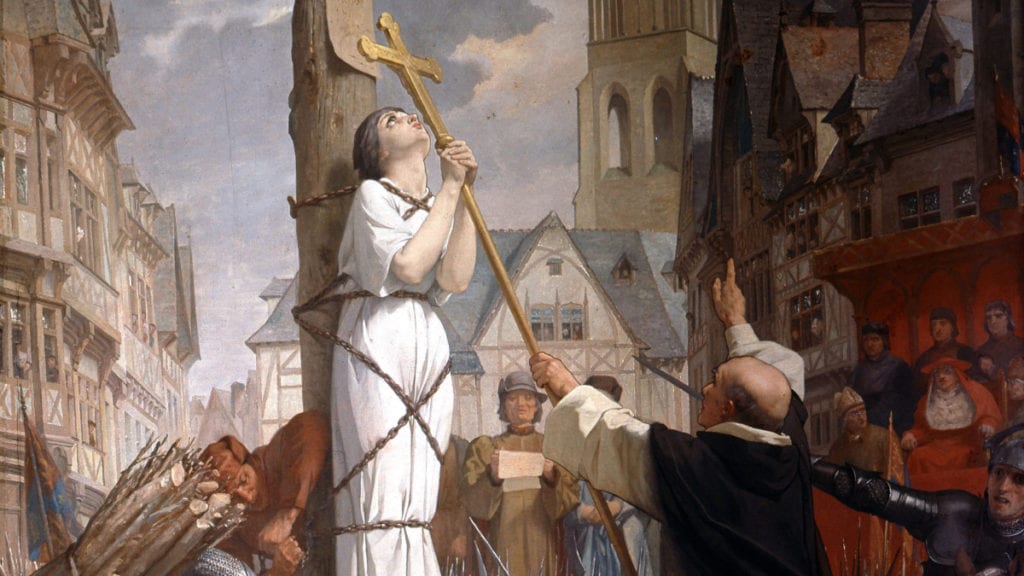
For those of you who have read the “Gospel According to John”, I thought the way Joan replied to the judges to be similar to Jesus’s response to the accusations of the Pharisees who don’t believe in him. Because Jesus is sent by God, he doesn’t need to justify himself constantly, he asks his detractors to believe in him as they believe in God.
“Let not your heart be troubled: ye believe in God, believe also in me.”
– John 14:1
After Joan of Arc’s official trial, her judges continued to question her in her cell. What they want is to make her confess. They want her to admit that her voices never existed, that she was not sent by God. The judges also try to put her faith at risk by blackmailing her.
They will tell her that if she doesn’t stop wearing men’s clothing she will not be allowed to confess before her death. Joan refused and said she is more afraid of the judgment from God than of the judgment of men. She told the Judges that she wears men’s clothing not because she likes them, but because God ordered her to do so to facilitate her mission. After months of isolation and mind games from the judges, Joan kept resisting, she never abandoned her faith, even when they threatened her with the death sentence.
Eventually, Joan was tried guilty and sent to be burned alive. The story says that her last words haunted the judges with the terrible mistake they had made. Moments before her execution, she says “The voices I heard were from God. everything I have done, I have done by the command of God! No, my voices did not disappoint me. The revelations I had were from God.”
“Jesus! Jesus! Jesus!”
And at that moment, the judges knew that they had made a big mistake.
After her last words, and without abandoning her faith, Joan of Arc martyred herself in the name of God. The English, in fear that the French will sanctify the rests of Joan’s body, threw her remains in the Seine.
After the death of Joan of Arc, Charles VII continued the reconquest of France. In 1435 he signed the end of the civil war with the Burgundians. In 1450 he reopened Joan of Arc’s trial and tried the judges who sentenced her to death. France would need to wait until 1453 for the Hundred Years War to have ended before regaining back its territories.
Joan of Arc was canonized by Pope Benedict XV on May 16th, 1920; her feast day is May 30th.
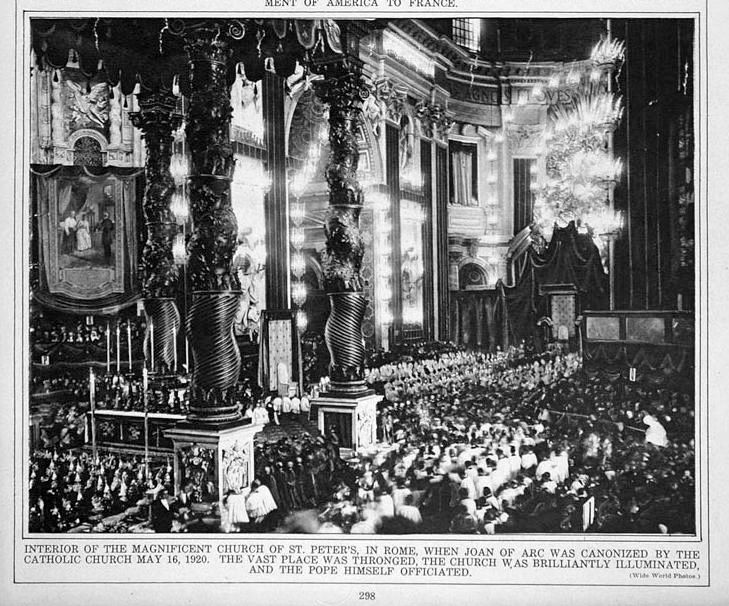
Conclusion
Saint Joan of Arc predicted significant events and her voices had guided France to victory. The fact that Saint Marguerite and Saint Catherine were sent to her was not a coincidence. They helped Joan fight and die like a martyr.
Joan of Arc’s life and death seems to have been an important element for the French taking back its territories. When I studied Joan’s story, it was shocking how everything that happened in her life seemed to be part of a bigger plan.
Whether or not we believe in divinities or if we prefer the rational story of Joan to the religious one, her story reminds us to be courageous and have faith in what we choose to do. Sometimes everything we need to succeed is to truly believe in it.
“All battles are first won or lost, in the mind.”
– Joan of Arc
Like to learn more about French history? Read our article on Catherine de Medici and learn how she influenced French gastronomy and culture.
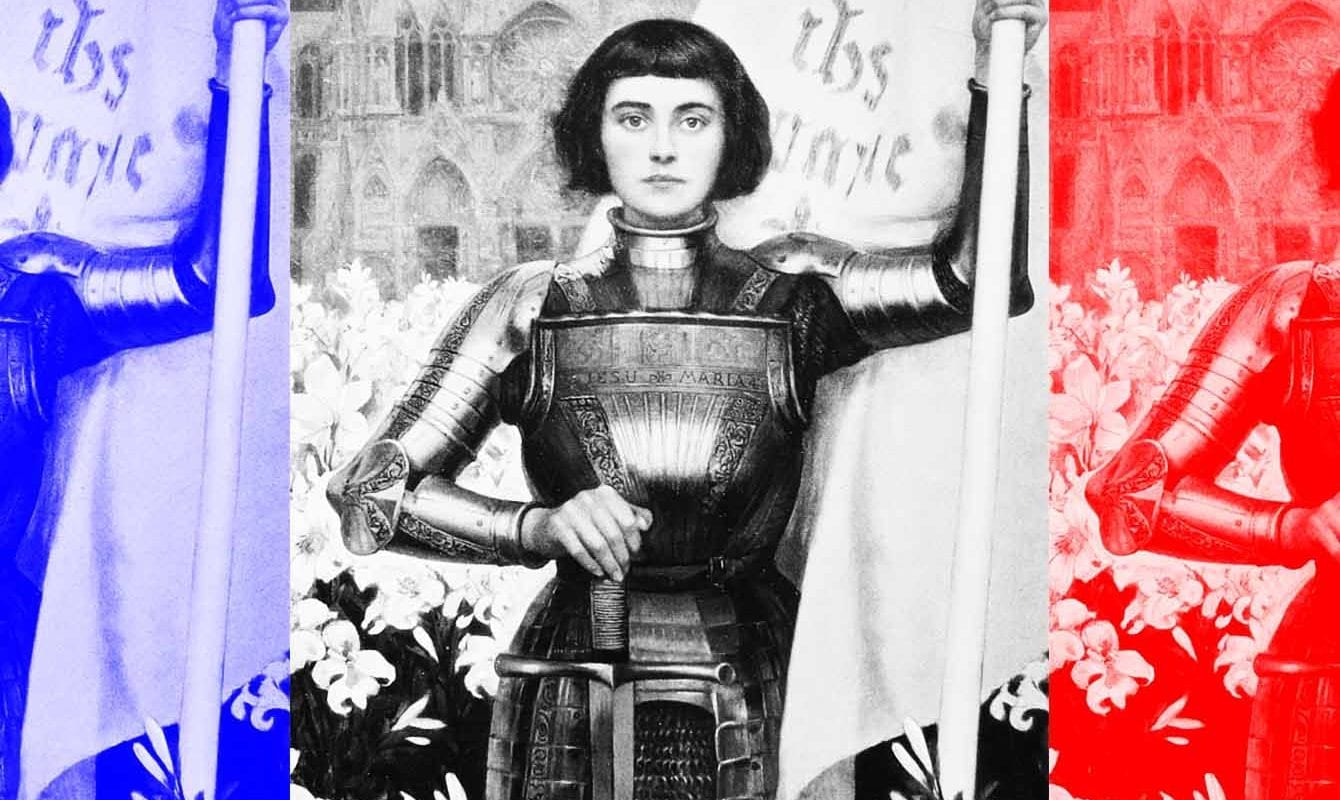

Leave a Reply